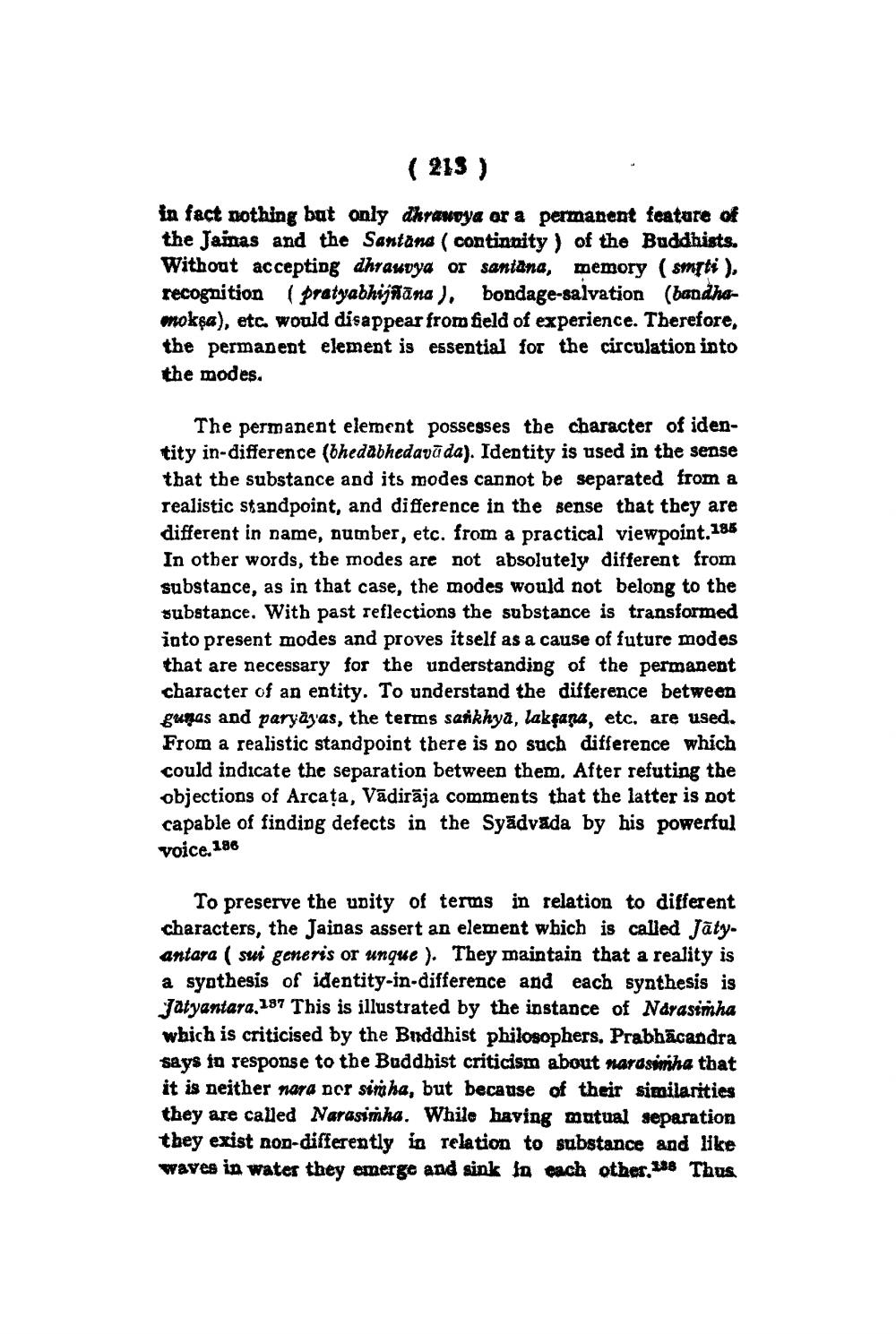________________
( 215 )
in fact nothing but only thrawoya or a permanent feature of the Jainas and the Santana continuity of the Buddhists. Without accepting dhraupya or santana, memory (smpti ), recognition (pratyabhijñāna), bondage-salvation (bandhamoksa), etc. would disappear from field of experience. Therefore, the permanent element is essential for the circulation into the modes.
The permanent element possesses the character of identity in-difference (bhedabhedavāda). Identity is used in the sense that the substance and its modes cannot be separated from a realistic standpoint, and difference in the sense that they are different in name, number, etc. from a practical viewpoint.185 In other words, the modes are not absolutely different from substance, as in that case, the modes would not belong to the substance. With past reflections the substance is transformed into present modes and proves itself as a cause of future modes that are necessary for the understanding of the permanent character of an entity. To understand the difference between gugas and paryayas, the terms sankhya, lakfaga, etcare used. From a realistic standpoint there is no such difference which could indicate the separation between them. After refuting the objections of Arcața, Vādirāja comments that the latter is not capable of finding defects in the Syädvada by his powerful
voice. 186
To preserve the unity of terms in relation to different characters, the Jainas assert an element which is called sātyantara ( sui generis or unque ). They maintain that a reality is a synthesis of identity-in-difference and each synthesis is Tatyantara, 187 This is illustrated by the instance of Narasimha which is criticised by the Briddhist philosophers. Prabhācandra says to response to the Buddhist criticism about narasimha that it is neither nara por simha, but because of their similarities they are called Narasimha. While having mutual separation they exist non-differently in relation to substance and like waves in water they emerge and sink in each other. 16 Thus,




